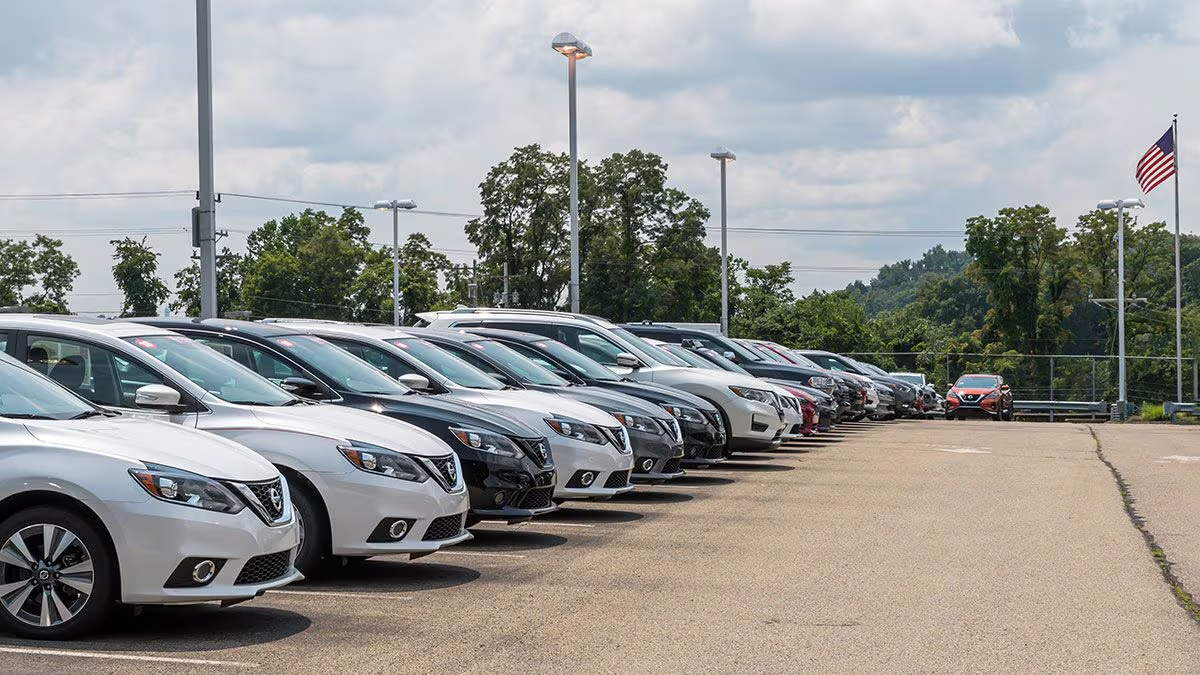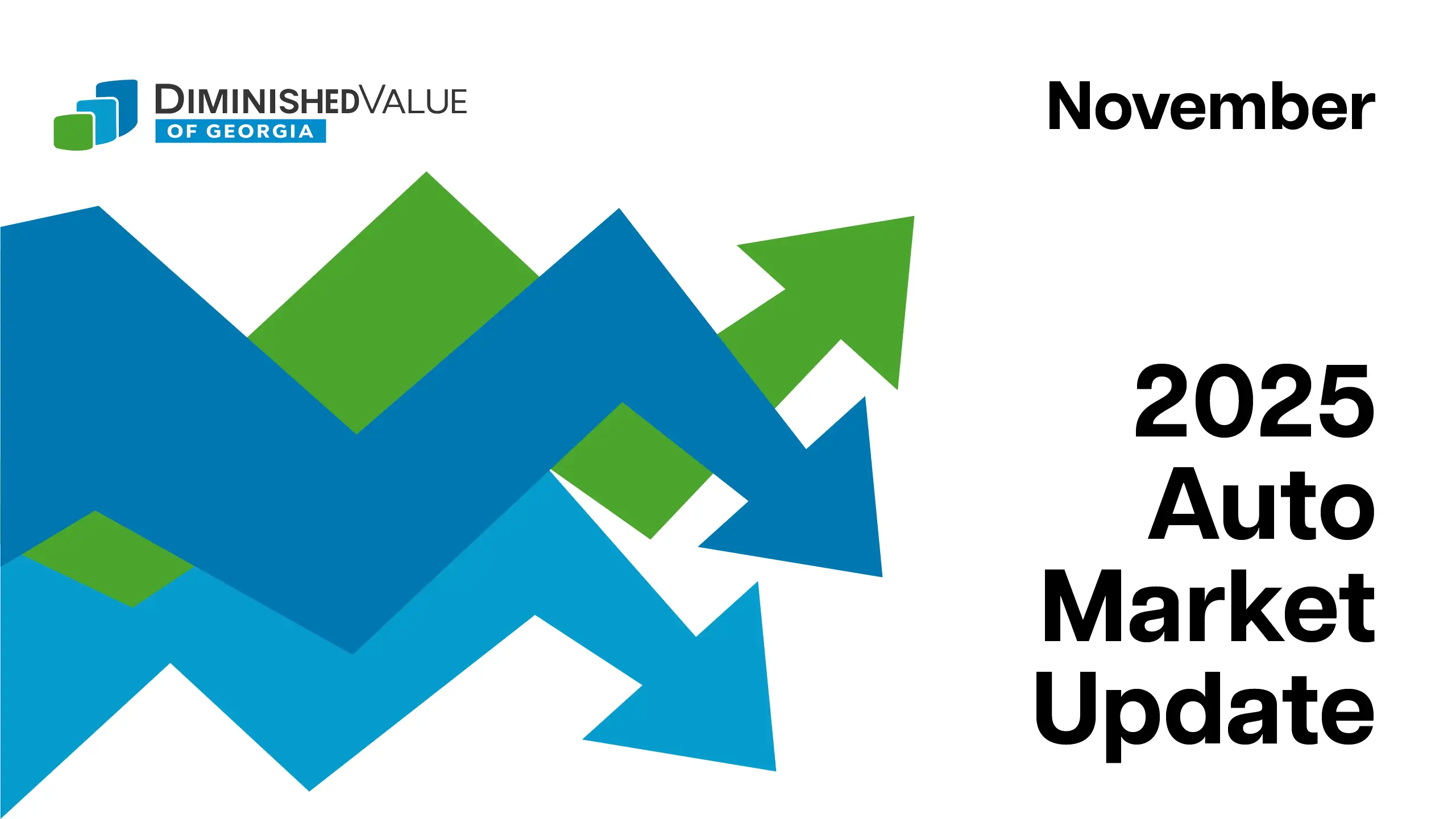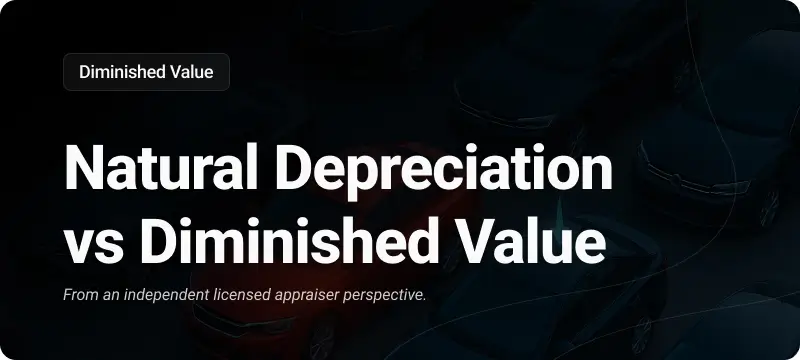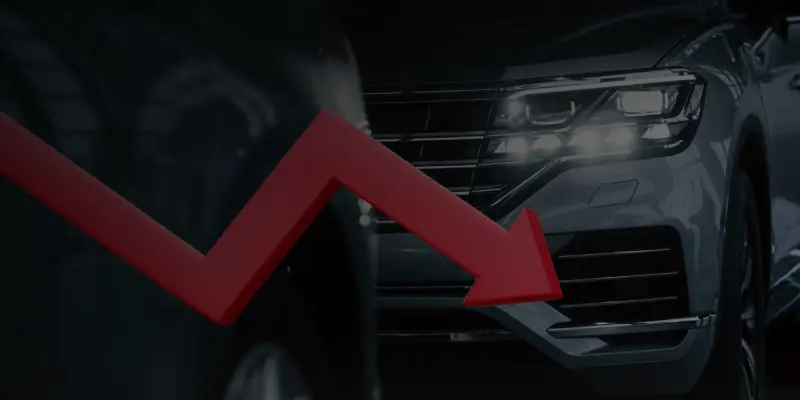
Car prices have been a hot topic over the past few years, with both new and used vehicles experiencing sharp increases due to supply chain issues and shifting demand.
But what does 2025 hold for buyers? Will prices finally drop, or will affordability remain out of reach for many shoppers?
Let’s explore what’s shaping the market and what buyers should expect in the year ahead.
Factors Affecting New Car Prices
Several key factors influence new car prices in 2025, from supply chain challenges to changes in buyer preferences and broader economic conditions.
Automakers are working to adapt to these changes while trying to keep prices competitive and attract more buyers.
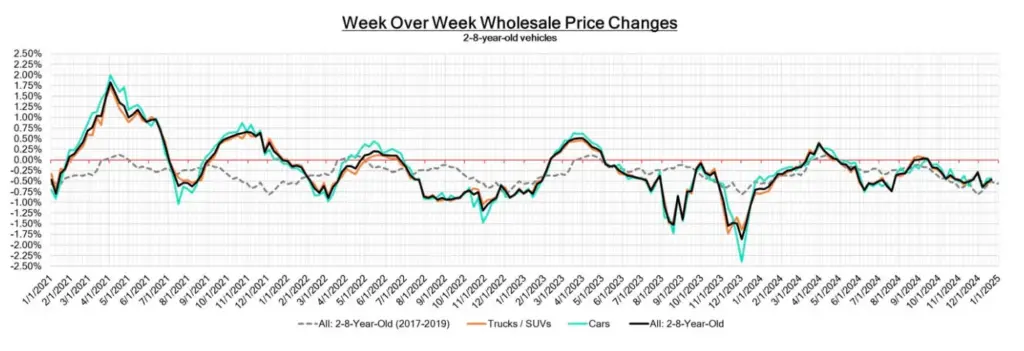
Rising incentives for new car buyers
Automakers are offering bigger incentives to encourage people to buy new cars. These include discounts, cash-back offers, and low-interest financing deals.These incentives signal manufacturers are pressured to move inventory in a slower market.
Even with these offers, many buyers are still priced out. About half of new car shoppers are looking to spend $35,000 or less, but the average new car price remains much higher at $47,870. This gap is pushing manufacturers to rethink their pricing to meet what customers can afford.
Increased competition among automakers
Competition in the automotive industry is heating up. Established brands are expanding their offerings, while electric vehicle (EV) manufacturers and startups are gaining traction. This creates a crowded market where every automaker is working harder to stand out.
To stay competitive, manufacturers are introducing aggressive pricing, better features, and improved technology.
Popular categories like compact SUVs and sedans are particularly competitive, and this rivalry could lead to more affordable options for consumers in 2025.
Consumer demand shifts and economic conditions
Inflation and rising interest rates are reshaping how people buy cars. Higher loan costs are making financing less appealing, leading some buyers to delay their purchases or opt for smaller, more affordable models.
Sales of compact cars like the Honda Civic and Nissan Sentra have surged by over 23% this year, outpacing the overall market’s growth.
Simultaneously, there’s a notable shift towards electric vehicles (EVs). In the third quarter of 2024, EV sales in the U.S. reached a record high, accounting for 8.9% of all new light-duty vehicle sales, up from 7.3% in the first quarter.
Predicted Trends for New Car Prices
As car sales decline for brands like Jeep and Nissan, 2025 could bring opportunities for buyers. Slower-selling models with high inventory levels may see price cuts, as automakers work to move unsold vehicles.
These market shifts, combined with targeted automaker strategies, suggest that new car prices in 2025 may become more affordable for buyers.
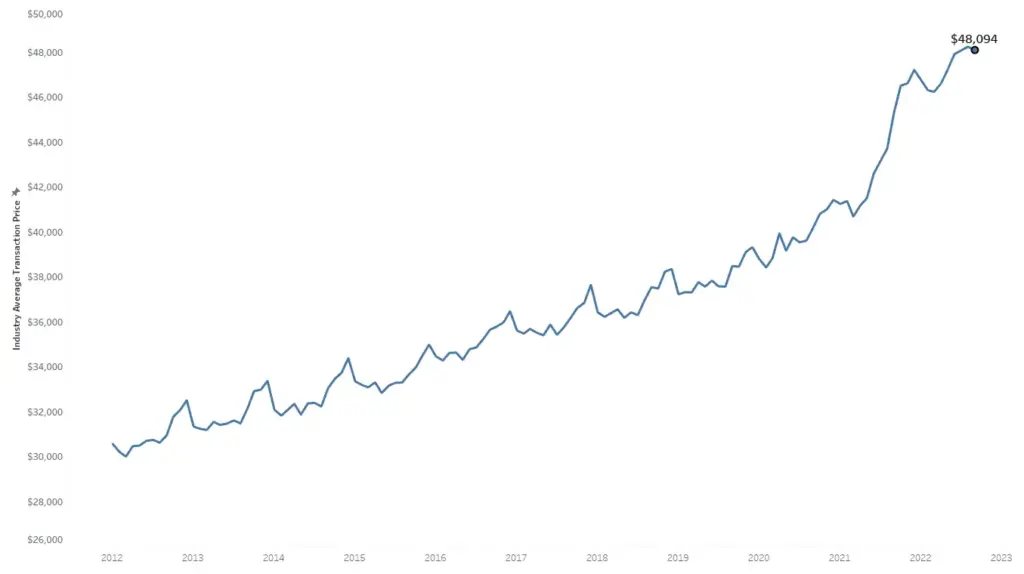
Estimated price decline of 3-5%
Analysts predict a 3-5% reduction in new car prices by late 2025. Currently, the average price of a new vehicle is $48,094, a notable drop from its peak of $50,300 in mid-2023.
This stabilization gives buyers more negotiating power, especially for models that aren’t selling as quickly. However, external factors, such as potential policy changes or new tariffs, could impact pricing trends, making the market less predictable.
Impact of manufacturer strategies on pricing
To adapt to a slower market, automakers are increasing incentives like rebates and special financing, which recently rose from 7.8% to 8%. These efforts aim to attract price-sensitive buyers and maintain sales momentum.
In addition, there’s a growing focus on more affordable models. Inventory for vehicles priced under $30,000 is projected to rise by 42% year over year, giving budget-conscious shoppers more choices. By diversifying their offerings, manufacturers hope to capture a larger share of the market and meet shifting consumer preferences.
Seasonal variations in pricing trends
Car prices often follow seasonal patterns. End-of-year sales events, when dealerships clear inventory for new models, typically offer the best deals. Conversely, summer months usually bring higher prices due to increased demand.
In 2025, these patterns are expected to persist, with additional price cuts likely during slower sales periods. Buyers who time their purchases strategically could take advantage of these fluctuations to maximize savings.
The Used Car Market Trends in 2025
Used car prices have seen sharp increases over the past few years due to high demand and limited supply.
However, 2025 could bring more stability to the market, with prices leveling off and showing only slight seasonal changes.
Potential price stability despite lower interest
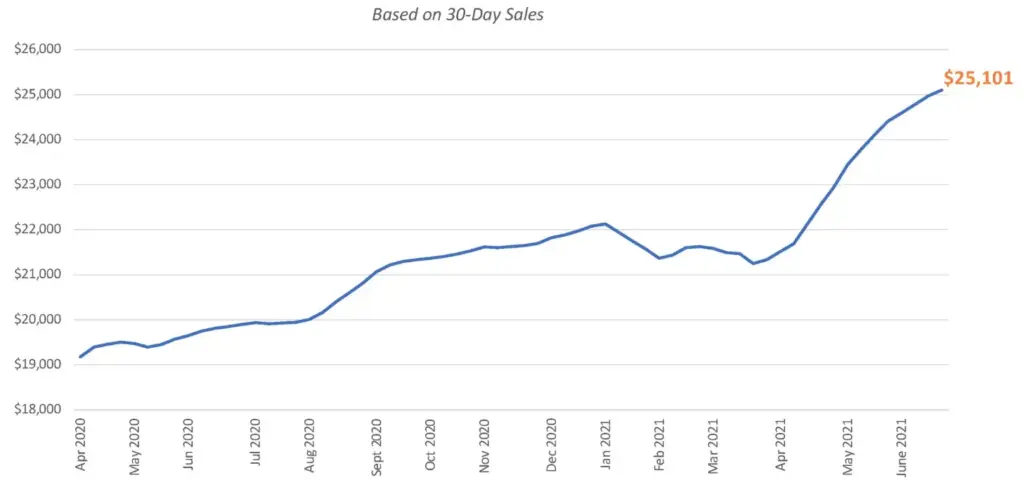
While interest rates are expected to decline in 2025, the impact on used car prices may be limited. Cox Automotive forecasts a 5% increase in new car sales for 2025, which could maintain stable demand in the used car market.
CarEdge projects the average used car price to hover around $25,100 throughout the year, indicating that major price drops are unlikely. This stability may benefit both buyers and sellers, especially for vehicles that maintain their value well over time.
Supply chain challenges and inventory shortages
The used car market is still feeling the effects of the supply chain disruptions from 2021 and 2022. With fewer new cars sold during those years, the availability of 2–4-year-old vehicles in 2025 will remain limited.
These shortages could keep prices steady or even slightly elevated for in-demand models. However, if supply chain recovery continues to improve, it could gradually ease some of the pressure on the market.
Demand for older, affordable vehicles
Affordable used cars will remain a key focus for buyers in 2025. Older vehicles with reliable performance and lower price tags will continue to attract budget-conscious shoppers.
As more consumers look for alternatives to high-priced new cars, demand for well-maintained vehicles in the $10,000–$20,000 range is expected to stay strong. This demand could sustain higher pricing for certain makes and models that offer a balance of affordability and dependability.
Will Car Prices Finally Drop in 2025?
So, wrapping it up: considering all the factors we’ve discussed, new car prices are expected to drop gradually by 3-5% by the end of 2025. Automakers are increasing incentives and building up inventory, which should help ease prices, especially for slower-selling models. The average price could fall from $46,000 to around $42,000.
For used cars, prices are more likely to stabilize than drop significantly. Limited inventory of 2–4-year-old vehicles will keep demand steady, but budget-conscious buyers will still find options under $30,000.
Of course, we can’t know this for sure—specialists are often wrong when predicting auto market trends. However, based on current indicators, 2025 looks like it could be a better year for buyers. While big discounts on every model aren’t guaranteed, the market is showing signs of improvement, and buyers can likely expect more opportunities to save.
The Electric Vehicle (EV) Market Influence
The electric vehicle (EV) market is expected to make significant strides in 2025, with its share of new car sales projected to reach 23%.
This growth is being driven by evolving consumer preferences, increasing competition, and federal incentives that make EVs more accessible than ever.
How the EV Market Will Shape Car Prices in 2025
The number of EV models available in the U.S. continues to expand, with 57 options on the market in 2024 and more expected in 2025. This increased variety, combined with growing competition, is expected to drive down prices for popular models like the Ford Mustang Mach-E and Chevrolet Bolt. New, budget-friendly EVs entering the market will further enhance affordability and consumer choice.
Additionally, advancements in battery technology and manufacturing processes are reducing production costs, which could lead to lower sticker prices across the EV market.
Meanwhile, federal incentives, such as tax credits and rebates, continue to play a pivotal role in encouraging EV adoption by lowering the upfront cost for buyers.
Even the used EV market is becoming more accessible. In 2024, used EV prices dropped at more than double the rate of the overall used car market, a trend that may continue in 2025, making EVs an increasingly attractive option for budget-conscious shoppers.
What Should Buyers Expect in 2025?
In 2025, car buyers can expect a more balanced market with improving affordability. New car prices are gradually stabilizing, with more budget-friendly models entering the market. Used car prices are predicted to remain steady, while electric vehicles are becoming more accessible due to advancements in production and increasing competition.
To get the best deals, buyers should avoid overpaying and take advantage of incentives or seasonal discounts. With more options and improving trends, 2025 could be a better year for car shoppers.

